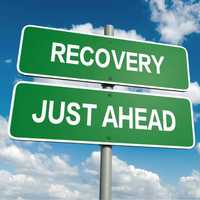Sugar and spice and all things nice – Tim discussed artificial sweeteners and tooth decay

Unfortunately for the sugar addict, sugar is seen as the ‘enemy’ of health. Forcing us to use alternatives to score our sugar high. Artificial sweeteners are a common aid in having your sweet and eating it too. If sugar is the culprit in a multifarious array of health concerns, what about artificial sweeteners? Are these damaging our health, particularly our teeth? Plaque metabolises sugar causing decay. This produces an acid, which contributes to decay. However, artificial sweeteners work differently. Artificial sweeteners contain antibacterial polyols and are not orally metabolised. According to research conducted in the 1990’s and early 2000’s chewing gum which contains xylitol, a sugar containing polyols , supports a healthy mouth. It seems we can have our sweet and eat it too.
Chantelle chatted about the sting of the Bluebottle Jellyfish
Australian summer is characterised by 40 degree weeks, sunburn, flies and blue bottle jellyfish. Bluebottle jellyfish are a multi-colony species also known as siphonophores. The colony consist of different zooids. Each zooid has a role, such as stinging or reproduction. A common myth among stung victims is to urinate on the effected area. However, science revealed urinating is not effective at treating the sting because urine has a low acidity. Vinegar has a higher acidity; however, before we add vinegar to our beach bags. Vinegar promotes discharge especially in the case of bluebottle jellyfish stings. Not an ideal treatment. The Australian Resuscitation Council suggests a more effective treatment. To wash the effected area with seawater and to treat the pain use heat or ice. If stung by a bluebottle jellyfish, head straight to the water.
Cat stopped by the studio to chat about the power of the Microbiome
The Microbiome is at the center of a heated scientific debate of bacterial fetal contact. Research indicates the Microbiome is ‘seeded,’ in utero. Many scientists thought the birth canal was the first place the fetus came into contact with bacteria. The assumption the Microbiome is ‘seeded,’ came about when scientists discovered bacteria in the placenta, which was thought to be sterile, and in the amniotic fluid. By understanding the Microbiome scientists can manipulate the it to protect against health issues such as asthma. The Microbiome plays a role in the immune system and scientists believe by understanding the Microbiome they will understand the mechanisms behind pre-term births.
Want to find more on these interesting topics? Check out the podcast and hear what Tim, Chantelle and Cat had to say!
Share "Boiling Point 6th of February; artificial sweeteners, bluebottle jellyfish and our microbiome"
Copy








